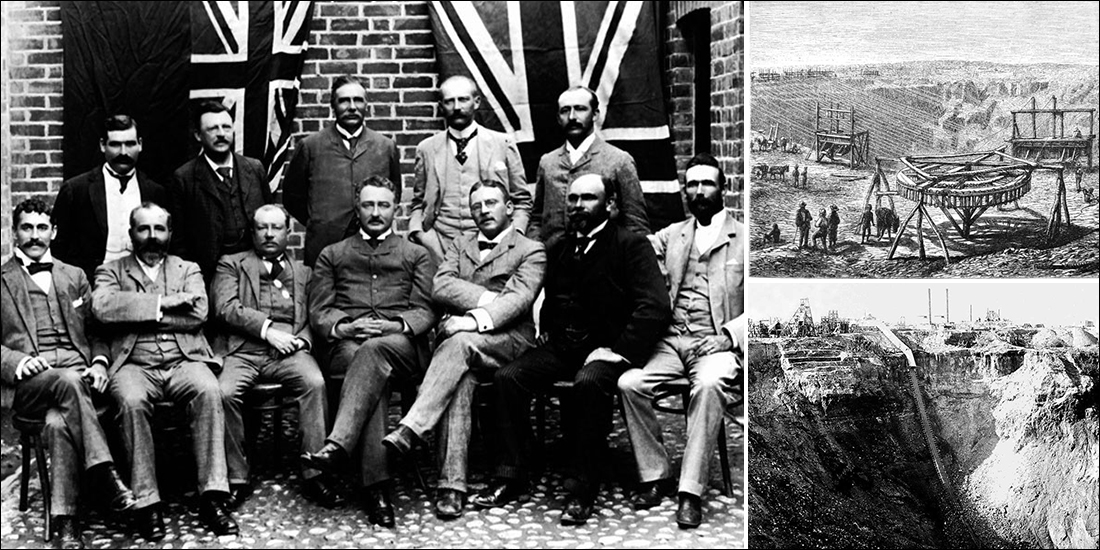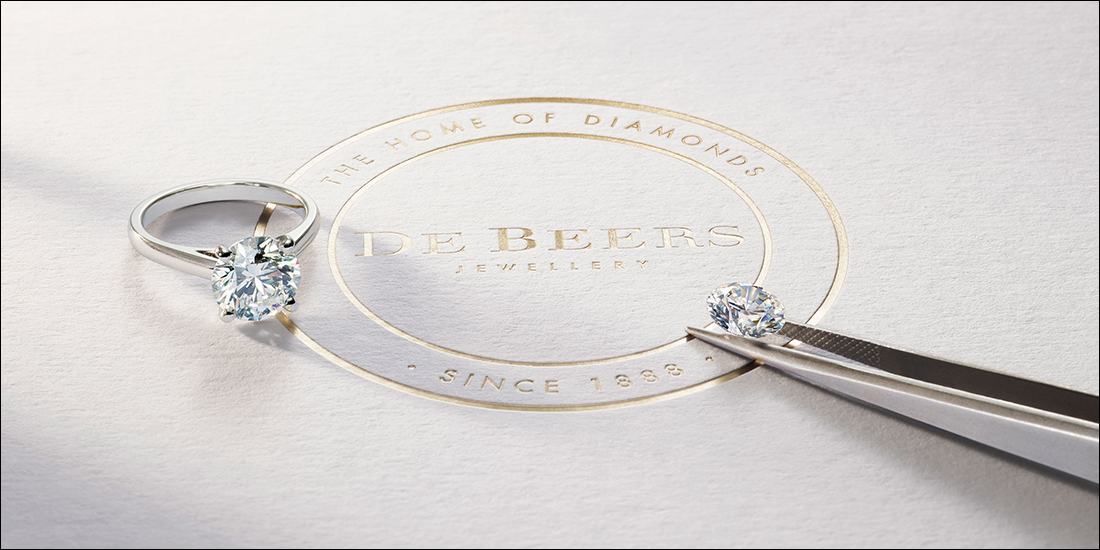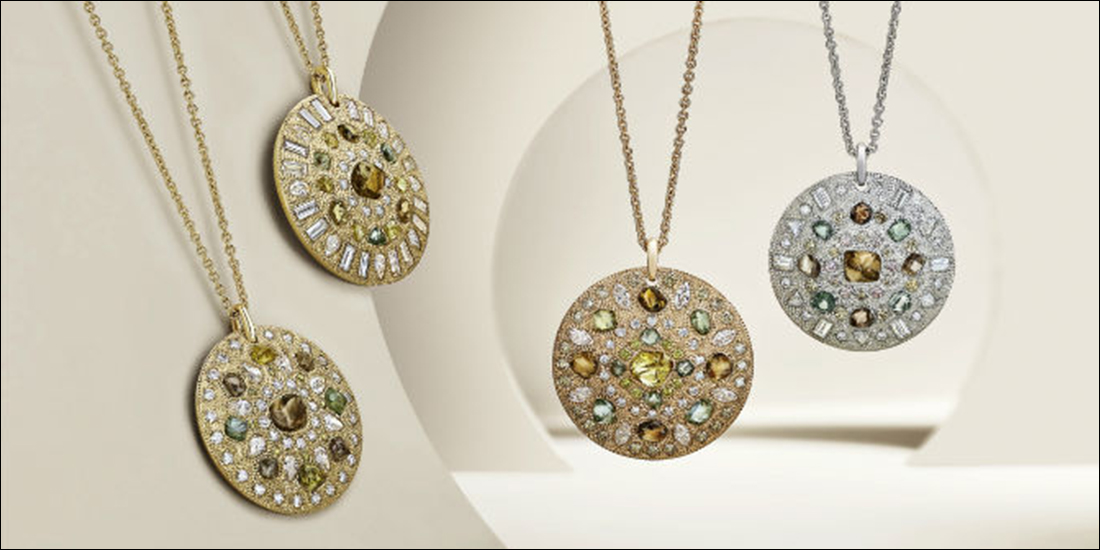While their formation in the earth’s mantle dates back billions of years, diamonds still fascinate, again and again. As sparkling as they are resistant, these small grains of carbon catch the eye and delicately reveal the fortune of their owner. If before the 19th century only monarchs could own them, the discovery of new deposits in South Africa in the 1850s brought a shower of adamas to the world. A real flood of supply that makes you forget the rarity of this stone! The law of the market forces, the value of gems falls. The price of a diamond is equivalent to that of turquoise or topaz! The story could have stopped at that point. The coveted gemstone could have lost all its luster and become a distant attribute of prosperity. But it quickly regained its pedestal, thanks to a certain Cecil Rhodes and his ingenious strategy. Renting water pumps to miners, this businessman was gradually caught up in diamond fever. While the industry is in the midst of collapse, this visionary believes in the intrinsic value of this shiny debris and massively buys up the land. But history will know no Rhodes sign.

©DeBeers
Under the name of De Beers
During his prospecting, Cecil Rhodes noticed the field of Johannes and Diederik De Beer, near the Orange River. If the two brothers do not want to take part in the flamboyant gem rush and sell their land to the British businessman, it is paradoxically their name that will mark diamond history. First under the brand name De Beers Mining Company, then De Beers Consolidated Mines and finally Diamond Trading Company, Cecil Rhodes continued his ascent through the scintillating constellations. He bought more and more mines and competitors. His goal? Monopolize the sector! And it’s a success story! At the end of the 19th century, 90% of production and distribution around the globe was in the hands of this Britishman, who with accuracy and foresight now controls the market offer. He then decided to create a shortage, which was certainly artificial, but allowed diamonds to regain their letters of nobility. With prices assured, the sector could also stabilize, which encouraged the development of the various trades in the industry, such as polishers, for example. After the death of Cecil Rhodes, the dazzling empire passed into the hands of his competitor, Ernest Oppenheimer, owner of the Anglo American Corporation. Under his leadership, De Beers became the fundamental loop in the diamond chain, without which no transaction could be concluded. The House’s influence is unparalleled! Consolidating more than fifty years of knowledge in gems, De Beers pushed innovation to its apogee, even establishing a set of standards for the world of jewelry in 1939: Carat, Cut, Clarity and Colour. And yes, the famous four C’s, which are used to evaluate the quality of a diamond, are also signed De Beers!
A story of eternity
Like other sectors, jewelry is impacted by the Great Depression. Ernest Oppenheimer’s son, Henry, decided to make a gemstone, obviously precious, into two pieces. Joining forces with the New York advertising agency N.W. Ayer, De Beers launched a very audacious advertising campaign in the 1950s. Its impact was colossal, both for the group, which saw its sales increase 100-fold, and for the future of diamonds as a whole. The intrigue is on! What is this exceptional formula? The slogan that would become the company’s motto: “A diamond is forever”. Using these four words, the House definitively links the soul of the precious stone to the representation of love. As solid and pure as the deepest feelings, the diamond symbolizes the eternal relationship that makes life shine with a thousand lights. This is how the solitaire proudly takes its place in the center of the engagement ring! The more excessive it is, the more sincere the love is, of course. Who would have thought that a marketing campaign was going to format the marriage proposal so much?

©DeBeers
Who said synthetic?
As conflicts over provenance and means of extraction erupt in the industry, new ethical standards are being put in place to prevent the exploitation of bloodstones. Following this trend, De Beers is also reviewing its way of working, offering only gemstones from suppliers who respect the Kimberley Process. But if this decision was predictable enough, what will follow in 2018 will turn the industry upside down. After nearly 130 years of swearing by the precious little pebbles extracted from the ground, the House has decided to expand its range by offering synthetic stones. A new step for this avant-garde company!
The jeweler De Beers
With LVMH, the House turned to a new era in the early 2000s. Now, under the name De Beers Diamond Jewellers, the House is leading a creative and daring revolution in jewelry. Much more than a craftsman, it makes diamonds speak in unique compositions. Whether through the explosion of colors in the range devoted to nature itself, the power of the Gods of celestial myths or the serenity of the delicate lotus, each collection opens a new chapter of elegance and symbolism. It is unimaginable to explore the world of De Beers without evoking the chimerical Talisman collection, the very embodiment of the House’s philosophy. On a golden cushion, the past and modernity are brought together. For the first time, the raw stone and its worked version meet to let the legend intertwine with contemporary interpretation. What an adventure!

©DeBeers
While De Beers has lost its diamond monopoly, the more than 100-year-old company has managed to evolve, sometimes by bending the world to its standards, sometimes by adapting to new trends. Whether it is a producer, merchant or designer, the brand has traced the history of the diamond and today aims for eternity.
